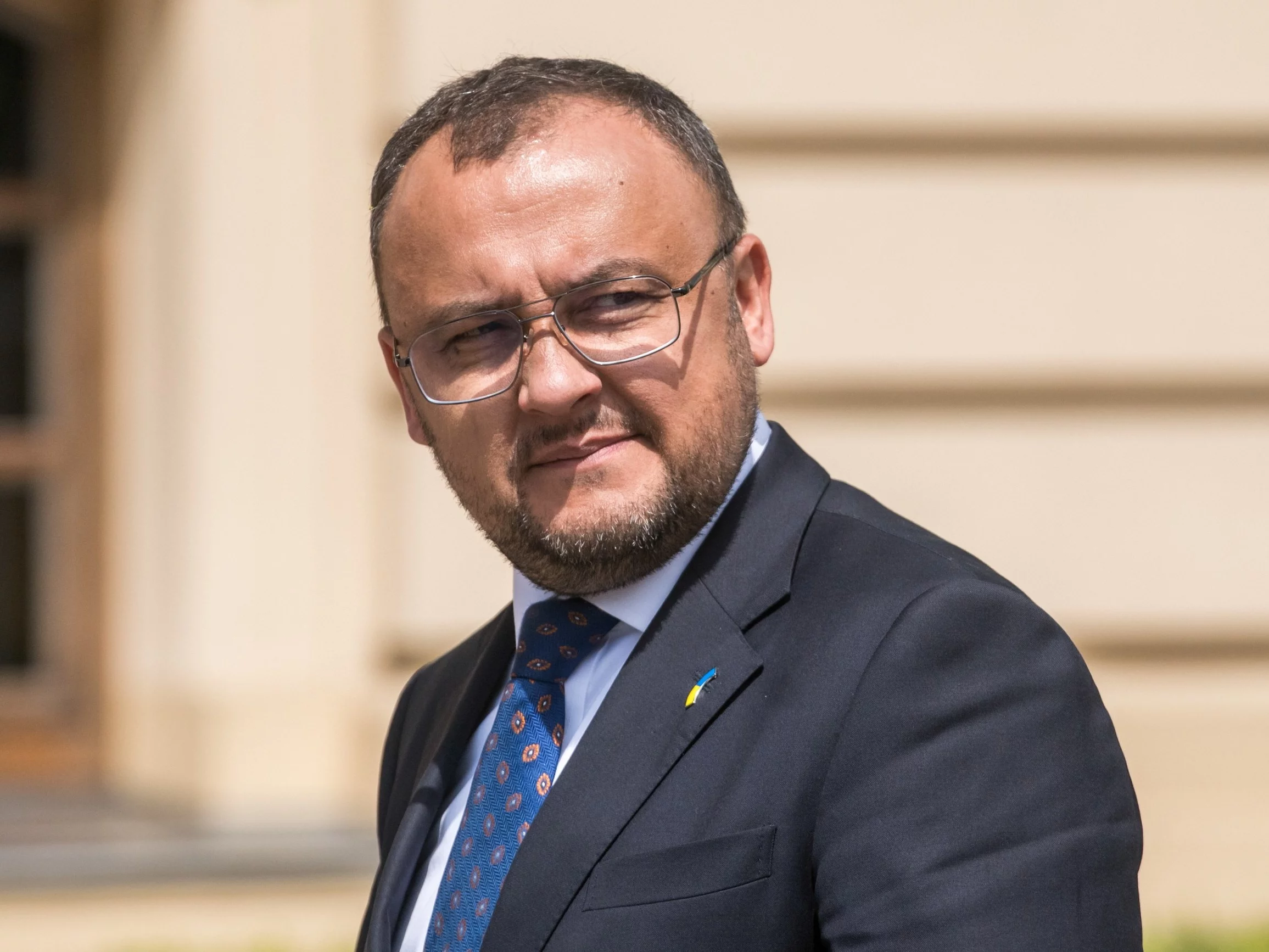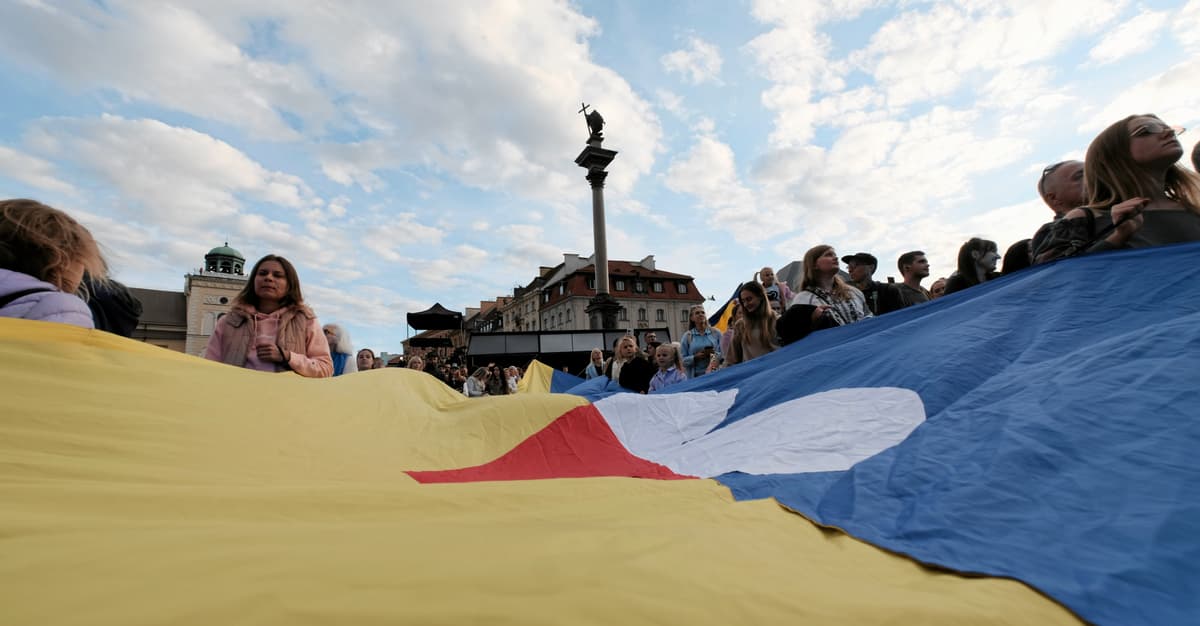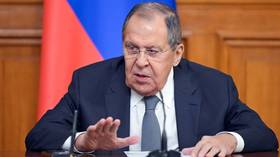Massive Ukrainian attacks on Crimea. 1168th Day of War


The Russians broke another line of defence of the opponent on the east side of the Pokrowsk–Constantinówka roadwhere they have entered its positions in a belt with a width of more than 5 km to a depth of up to 5 km. After many months of fighting, they besides invaded the area of the road junction close Małyniwka. They proceed to attack 3 roads north of Torećek, leaving the Ukrainian part of the quarters in the north and west of the city under control. They are increasingly attacking tiny groups on motorcycles in the cover of drones, which is designed to supply high-speed assault and at the same time make it hard for defenders to detect attackers earlier.
Further progress, however, without changing the overall situation, the aggressor's forces made on the another directions of impact in Donbasa – between Pokrowski and Welyka Nowosłka, where fights for the local road node Bahatyr began, in the Jara Times and south of this town, east of Siewierska and north of Lyman began. insignificant field changes in favour of invaders occurred on the right bank of the river Bench north of Kupansk, on islands in the mouth of Dnieper south of Chersonia, as well as on the border of the Sumsk region with Russian Kursk and Bielgorod circuits. According to any sources, as of May 5, Ukrainian troops are to effort to carry out an attack from the Sumic region in the FR territory, hitting border Tiotkino in the Kursk region, west of earlier fighting areas.

At the turn of April and May, the Russians conducted a series of massive attacks on the Kharkivs. Their drones hit this town for 4 days in a row. They hit mainly industrial infrastructure, but twice the attacks resulted in a crucial number of civilian casualties. 47 people were injured on 29 April, and on 2 May – 51.2 May, the aggressor was to usage drones with thermobaric warheads. Kharkov again became the mark of the attack on 6 May – as a consequence of the attack, 1 of the largest markets in Europe – Barabaszów, among others.
On 1 May, the aggressor drones hit Zaporozhye, where the main goal was to repair rolling stock. In another parts of the city, 33 people were injured. Representatives of the Ukrainian railways – the Ukrzaliznyci – reported that this was another attack on their method facilities in fresh days after the attack at repair plants in Kiev, which was not previously reported. The railway remains the main means of transport of supplies to the Ukrainian army. Unmanned enemies besides led to demolition and civilian casualties in Odessa (30 April and 5 May), Nicholasov and Cherkasy (3 May) and Kiev (4 May). Russian rockets struck, among others, in Białogrod on the Dniester (1 May) and Konotop (5 May).
The number utilized by the aggressor during the week of impact drones and their imitations again exceeded a thousand. According to Ukrainian data, from the evening of April 29 to the morning of May 6, the Russians applied a full of 1028. 430 were to be lost and 396 were to be lost locally. Thus, for the first time more than 200 enemy unmanned workers could hit targets, indicating the progressive weakening of Ukrainian air defence. At a comparatively low level, the number of rocket invaders usage remains. During this period they were to usage 12 of which 1 was shot down.

On 2 and 3 May, Ukrainians conducted the largest attacks on Crimea and its neighbouring coastal part of the Krasnodar Country in a year. According to Russian data, they utilized at least 255 impact drones (2 May to be shot down 89 over Crimea and 23 over the Black Sea, and a day later – 96 over the peninsula and 47 over the Krasnodar Region), as well as at least 23 submarines and 11 missiles (eight torpedo Shadow missiles and 3 Neptunes). However, the impact did not yield the expected results – most likely no of the missiles hit a military facility or critical infrastructure. One of the submarines., according to a message from Ukrainian Military Intelligence (HUR) equipped with American AIM-9 Sidewinder missile, However, it was possible to shoot down an unmanned Su-30SM fighter. It's the first specified case in history. (in December 2024, Ukrainian submarines shot down 2 aggressor helicopters). However, the information of president Volodymyr Zelenski (repeated the day later by HUR chief Kyryl Budanov) about the dropping of the second Russian fighter besides has not yet been confirmed.
As a consequence of attacks by Ukrainian drones on the territory of the FR, harm occurred in the premises of plants producing air and sea equipment in Muroma in the Włodzimier region (30 April) and producing electrical equipment (including transformers) of the Striel mill in the Brian region (4 May). The impact on Moscow on May 5 and 6 was unsuccessful.
On April 30, hackers working for HUR conducted a two-day cyber attack on the infrastructure of key Russian net providers, including SibSet. DDoS attacks overloaded and shut down SibSet servers in 4 Siberian cities: Novosibirsk, Novokuźnsk, Kemer and Krasnojarsk.

On 30 April, the State peculiar Communications and Information Protection Service published report on Russian cyber attacks. In 2023, there were 2541 cyber attacks on Ukraine, and a year later their number increased to 4315, a jump of 69.8%. The strikes were frequently coordinated with military moves, which were to destabilise the state and weaken the morale of society. The following types of actions prevailed: DDoS attacks, the usage of malware (e.g. WhistlerGate, HermeticWiper) destroying data and paralyzing IT systems, phishing campaigns aimed at stealing authentication data or spreading malware, attacks on critical infrastructure (especially on the energy sector). Most incidents were attributed to hacker groups associated with Russia, specified as Sandworm, Fancy Bear, and Killnet. The activities of independent groups or those supported by another countries which utilized the war chaos for their own purposes, specified as data theft or blackmail, were besides observed. Despite the large scale of attacks, Ukraine demonstrated resilience through fast response, global cooperation and private sector support (e.g. Microsoft, Cisco).

On 30 April, the Reuter Agency, citing South Korea intelligence data, reported that about 600 DPRK soldiers were killed in fighting in Ukraine., and a full of about 15,000 troops were sent to the front from this country.
On 2 May, the Ministry of abroad Affairs of the Togiy Republic, on the basis of a study from the Ukrainian authorities, informed that the Ukrainian prisoners were captured by Togo citizens participating in armed actions on the part of the FR. Among the captured are young students who were to lure false scholarship offers to Russia. The authorities called on the Togians to verify the authenticity of specified proposals and contact the applicable services before the journey, in peculiar the FR.

30 April The Ukrainian parliament advocated an extension of the period of voluntary return to military service for soldiers who erstwhile voluntarily abandoned it. This is intended to improve the human resources situation in military units and to encourage those who have left the units to proceed their service.
The authorities proceed to carry out investigations to identify those liable for the 120 mm case of supply of defective mortar ammunition revealed in November. On 30 April, the Kiev court decided to arrest 3 people (officers of the Ministry of Defence and manager of the Pawłohradzki Chemical Plant). A day later, a deputy manager of Leonid Szyman Armed Forces Departments was detained in the Dynepropetrovsk Oblast. The issue is of large interest to the media, which item serious problems in the national defence sector. Despite the controversy, the Ukrainian Ministry of Defence continues to cooperate with the latter. The Head of Defence Procurement Agency (AZO) Arsen Żumadilov reported that the plant is not a key supplier of mortar ammunition, and quality problems have been resolved. He besides stressed that the termination of the contract could lead to closure of the company, which is not in the interest of the State.
On May 1, the Ukrainian Defence manufacture (Ukroboronprom) reported that in 2024 it achieved a consolidated net profit of over 1.31 billion hryvnia (more than $31.5 million). Part of these funds will be transferred to the state budget in the form of dividends, and most will be allocated to the improvement of arms production, relocation, capacity expansion and the creation of fresh plants.
On 2 May, Ukrainian law enforcement authorities revealed 2 cases related to the illegal import of cars under the pretext of providing assistance to the army. After crossing the border, the cars were sold or stripped into spare parts. 30 vehicles, documentation, cash and computer equipment were confiscated in the Lviv Oblast. Both cases point to the existence of a wide-ranging abuse of humanitarian assistance supplier position for the Armed Forces of Ukraine to illegally import and sale cars.

Donald Trump's administration made the first decisions to sale military equipment and services to Kiev. On 1 May, she notified the U.S. legislature of its intention to export $50 million worth of defence products as part of direct commercial sales (Direct Commercial Sales, DCS), as reported by ‘Kyiv Post’. A day later, the State Department agreed to the possible sale of Ukrainian training and method equipment for F-16 fighters worth $310 million. According to The War region portal At the end of April, the Americans handed over to the Ukrainians a number of decompleted (including engine and radar deprived) F-16 for replacement parts. The dismantled aircraft on April 26 went to Rzeszów-Jasionka aboard the An-124 transport deck.
Kiev is most likely to receive the American upgraded Patriot Air defence System, which previously based in Israel "The fresh York Times", he said. According to informants, allies besides discuss the transportation of fresh Patriot launchers from Germany or Greece. So far Ukraine was to receive 8 systems (batteries) of this type, of which six stay active (two were withdrawn for repair). The Reuter Agency referred to the reports, which reported on May 5 that talks between allies concern the supply of further patriots from the US or Greece. On the same day, however, the messages of both media were denied by the government in Athens – he stated that Greece is not planning specified a step and that no discussions are taking place on this issue. In turn, the Ukrainian defence Express stated that as of April this year, there were "at least seven" systems active in Ukraine. Information chaos should be associated with further strengthening of Kiev's efforts to attract fresh patriots, taking the form of information force on partners.
Ukraine and the Czech Republic agreed on training Ukrainian pilots on F-16 fighters and L-39 school aircraft, as announced by president Zelenski and Prime Minister Petr Fiala during his visit to Prague on 4–5 May. The applicable dimension of the agreement boils down to training Ukrainians on the Czech L-39. In the case of F-16s, which Czech aviation has never used, it is alternatively an appeal to cooperate with the willing states with these machines, as stressed by Prime Minister Fiala, explaining Zelenski's announcement to make an F-16 school with the Czech Republic. The Ukrainian leader besides announced that Kiev is expecting to receive 3 million artillery ammunition this year, of which 1.8 million are under the alleged Czech initiative.














